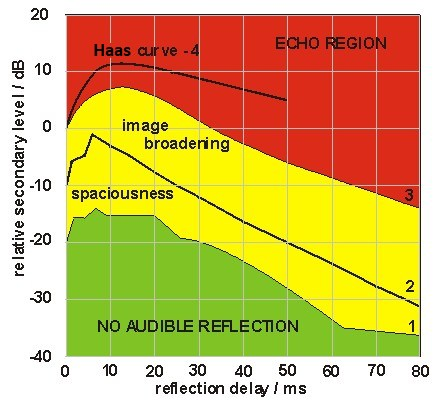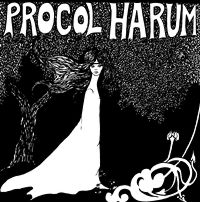It'd be a good time to mention that Ron and I spent several hours together this past Tuesday in his listening room. I think I selected most or all of the music from Ron's collection that we heard. We probably listened to more tape than vinyl, but we certainly sampled both. Not a single CD was played that day.
I found Ron's system immensely enjoyable. And over the course of the day, we played at least a few songs we both consider roughly top 10 of all time. Ron mentioned that he was nearly moved to tears during Bridge Over Troubled Waters as I recall. While I encountered the same emotion when Ron surprised me with a master tape of Whiter Shade of Pale.
View attachment 111947
I was absolutely bowled over. One of my all-time favorite pieces and in my opinion just a perfect song. I've probably listened to it a thousand times. And then to hear it sound like this ... Like I'd never heard before ... An amazing and emotional experience. It can't be described other than to say that off the tape, it sounded like it had been recorded on Monday. Versus any vinyl playback I'd ever heard that sounds comparatively low fidelity and almost muted. Whew. I believe we also played Ron's vinyl copy for good measure. For reference, Ron's 2-track master tape is referred to in this article by Art Dudley:
It took a while to locate the production master for the single—the original four-track tapes haven't surfaced since 1967, and are presumed forever lost—but along the way someone turned up a box from Advision Sound Studios in London, dated "April 1967" and marked, simply, "Whiter Shade of Pale...

www.stereophile.com
I know that Ron has countless hours of enjoyment ahead in his listening room. The 4 hours we spent felt like 4 minutes. A great day, with great music, and great company! Thank you again, Ron!
Obligatory pics follow.
View attachment 111948
View attachment 111949
View attachment 111950
View attachment 111951
View attachment 111952
View attachment 111953
Following up on that great report by Bazelio (with nice pictures) let me add mine as well.
Recently, after the California audio show, I had the pleasure to visit Ron at his house and also to spend some time listening to his system.
The first evening started with Mozart's Symphony #41 (Jupiter) with Otto Klemperer conducting the Philharmonia Orchestra (great performance!), from tape. What was immediately obvious was the outstanding sound of strings and woodwinds, evoking a strong resemblance with what can be heard in the concert hall. There was not just an immense amount of delicate, silky fine texture, but also an airiness around the string sound that sounded very convincing but is very hard to reproduce. This airiness is not always heard in the concert hall -- it depends on the acoustics -- yet it is heard often enough. The level of believability at which this presentation played out was just extraordinary. Importantly, not just the violin and viola sections sounded like that, but also the low strings (celli and contrabasses). This airiness also in the lower registers is really important for the believability of overall airiness of string sound, but requires a level of resolution in the bass that is usually just not heard. Ron's system delivered. Those bass towers with active class AB amplification are simply in a class of their own, and the integration of sound with the ribbons was just excellent; I could not detect an audible discontinuity.
Woodwinds were extraordinary as well. The completeness of the harmonic palette, with all the finesse of overtones, was at a very elevated level.The distinction between the different woodwind timbres was easily heard, and in the complex polyphony among the woodwinds the aural separation of musical strands was perhaps the best that I have ever heard.
In general, separation of instruments within the orchestral palette, both by tone and individual space for each instrument (section) in the orchestra, was outstanding. The instruments were spread out over a quite large stage with immense clarity and transparency. The presentation of the complex polyphony of the finale of this symphony was spectacular, it gave the impression that you could hear everything. There was an effortless relaxedness to the sound.
The same kind of quality of reproduction extended to other orchestral tapes as well. The next day I was blown away by the tape of Beethoven's Coriolan Overture, Karajan conducting the Berlin Philharmonic, recorded in 1966. It sounded dramatic, open and free. And what a string sound!! The performance following on that tape of Beethoven's Ninth by the same conductor and orchestra, recorded in 1962, also sounded great. While the sound of the violin section was a bit more whitish (according to my experience inherent in the recording) and the tape had a few problems with distortions (trumpet fanfares towards the end of the Adagio), the characteristics of reproduction that I described, with airiness of sound as a central point, were present here too and immensely enjoyable. Particularly memorable in the first movement: There are several consecutive fortissimo outbursts of the orchestra that each suddenly come to a stop; following each of these stops you could hear the trail of reverberation through the concert hall with immense clarity and openness. The timpani in the second movement sounded impressive, and the complex polyphony of woodwinds again was a delight in its transparency and harmonic completeness. We listened to the entire 1 hour+ symphony. Absolutely tremendous, addictive music reproduced in an addictive manner, because it was so reminiscent of the concert hall in the above described ways, as I have not heard it at that level on other systems. Very dynamic and energetic as well.
All the four solo voices (soprano, alto, tenor, baritone) in the final, choral movement of the symphony sounded very convincing in tone, with drama and liveliness. The dramatic entrance of the baritone towards the beginning of the movement, after the battle of "new" vs "old" music, was authoritative. The choir sounded great.
We also listened to the first two movements of Scheherazade (Reiner/CSO) on tape. Again the finesse of harmonic completeness, the finesse of airy string sound and the incredible separation of instruments, allowing for an effortless see-through experience into the inner workings of the music, made this an unforgettable experience. It was the best reproduction of the music that I have heard.
As for small-scale solo vocals, Send in the Clowns by Bill Henderson on tape was a sensation. Such transparency and presence of voice! I fully understand when Ron said earlier on this thread, if I remember correctly, that this alone is worth for him the experience of this system.
The tape of Soular Energy by the Ray Brown Trio was another highlight. It was the best stand-up bass that I have yet heard from a system (again, those bass towers!). Drums and piano sounded great, with superb detail on the drum sound.
At this point, let me allow a comment on the overall tonal balance. It was just right, and I think Ron did a great job with choosing the right amount of dampening with acoustic panels, not too much, not too little. There was simply no brightness either. Please forget about the sound from the videos, it's misleading (you also cannot get a sense of the incredible finesse of the sound of Ron's system from video, you just can't).
I wanted to listen to digital (CD playback) mostly just for diagnostic purposes, and we did not spend much time with it. Yet still, qualities of the system were evident there too. The dulcimer on Joni Mitchell's "Blue" album was the most transparent and believably airy that I have heard, and the drum brush work on Lee Morgan's "Lover Man" was exquisitely resolved. The digital sounded clean and relaxed as well.
To my ears, the vinyl was the most nervous and restless sounding of the sources.The direct drive of the Denon turntable may have contributed to that impression, as it perhaps micro-corrects all the time for constant speed, with permanent "jerking" back and forth as result. This lack of relaxedness became quite clear in a direct comparison of Carol King's Tapestry album on tape and on vinyl. It's not a great recording to begin with, but Ron thought on tape it sounded the best he has ever heard it.
Was the system perfect? No, nothing is, and everything is a compromise to some extent. The system does lack some oomph in the low midrange, for example on the baritone sax in the Lee Morgan track mentioned before, or also on orchestral trombones. The low brass opening of Scheherazade, addictively transparent as it was, lacked some weight. Yet every system is a personal choice, and for Ron evidently the high transparency on vocals, and otherwise, is worth the tradeoff. Really well done, Ron!



